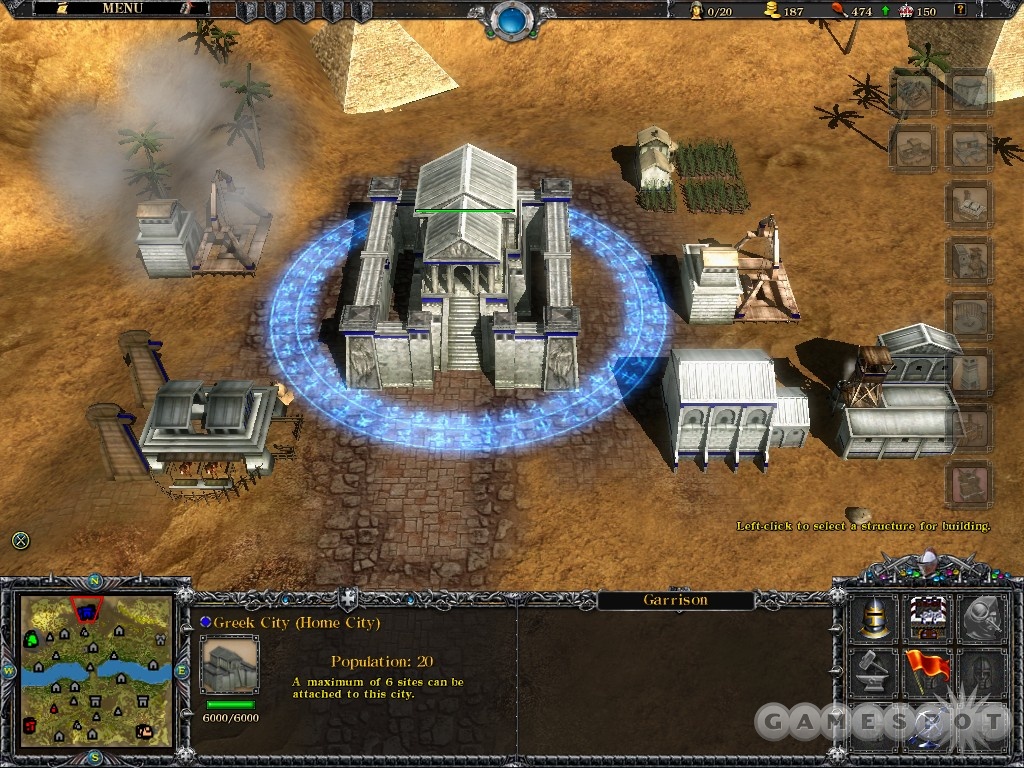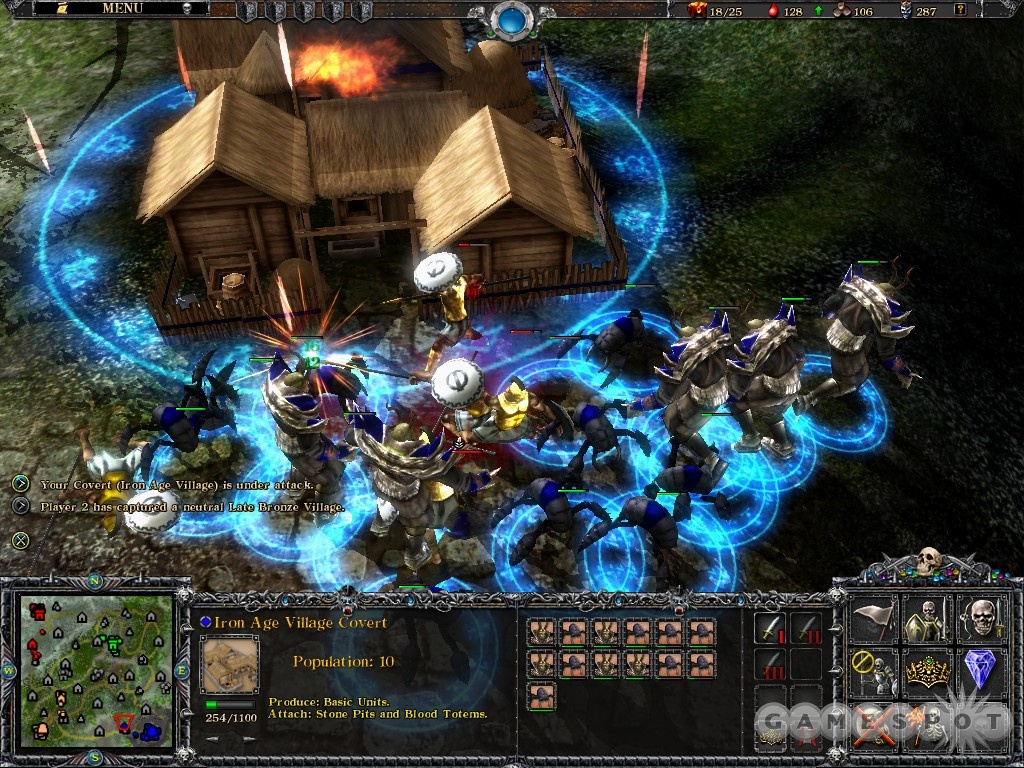The resurrection of an old game franchise is never without pitfalls, and Seven Kingdoms: Conquest seems to plummet into just about every one of them. Enlight Software's latest has nothing to do with the historical-strategy epic that turned a lot of heads back in 1997, and has moved from a complex empire builder to a simplistic, fantasy-oriented real-time strategy game that pits humans against demons. Beyond that, the game is clearly unfinished and has a tremendous number of serious bugs, few strategic choices during gameplay, and campaign missions that amount to nothing more than skirmishes by different names.

Instability is the biggest problem. Seven Kingdoms: Conquest is, to use the technical term, buggy as hell. Just getting the game to start is a challenge, and glitches can bring everything to a halt at any time. Not only did every one of these frequent lockups require an Ctrl-Alt-Del escape to the Windows desktop, but they also seemed to cause some sort of lasting graphical corruption that prevented a successful restart of the game. The game would load, but with a black background screen in the main menu and lots of visual artifacts and stuttering music. Only a full uninstall and reinstall got the game working again...at least until the next big crash.
Other serious problems plague the game even if you get it running properly for a few minutes. The human tutorial mission is so messed up that it's unplayable due to scripting errors, such as a gate that refuses to open. Some campaign and skirmish missions with annihilation as the objective can't be won even if you wipe out all of your enemies. Pathfinding is awful for the most part, which means that units easily get stuck behind buildings. And any sort of adjustment to the visual settings seems to cause the game to crash even sooner than it usually would. This actually serves as a kind of trap, given that you're bound to go into the video-options screen eventually in search of a way to improve the gloomy, horrifically pixelicious visuals, or at least to change the default resolution to something supporting widescreen monitors. (Don't bother, the game's limited to 1024x768 and 1280x1024.) To make a long story short, wait for the patch.
Or not. There isn't much here worth hanging around for, actually. Although the original two games in this franchise were hardcore strategy epics that blended real-time battles with intricate empire management and economics, Seven Kingdoms: Conquest is a generic RTS that pits humans against demons, and it features generic resource gathering and base building. You don't even get to play with the seven kingdoms that gave the franchise its name. Instead of the partially realistic, diverse ancient powers that gave the first game its depth, such as the Chinese and the Persians, you're stuck with a handful of nearly identical human factions given historical names such as Hittites and Saxons. The only appreciable difference between these nations is the visual appearance of units in the interface. (As an example, Egyptian troops wear those famous desert headpieces.) Troop and building options change as you move forward from the starting Early Bronze Age through the closing Middle Age, but even then it's not as if you're thrown any curveballs. Bowmen turn into crossbowmen, and catapults become trebuchets--that sort of thing. At any rate, the human factions play the same no matter what age you're currently undergoing.
Stereotypical characteristics such as flame, ice, plague, and shadow make the seven demon-realm factions more interesting, but there isn't much to choose from no matter what faction you're commanding. Admittedly, some of the monsters are pretty cool in an old-school D&D fashion, given that you have the ability to summon troops like yeti, plague demons, and naga. Nevertheless, each realm uses the same two basic units, larvae and succubi, and you get only a handful of unique options to choose from when building the unit-summoning hellgates. Resource gathering has a more intriguing, darker vibe, although collecting the blood needed to summon monsters is about as creepy as pumping oil, and the facilities that gather stone are just mines under the spookier name of "stone shrines." Monotony grows fast.
Game options do nothing to alleviate this sense of boredom. The human and demon campaigns consist of skirmish missions given opening screens and voice-over intros that recount soldiers' diaries. The voice acting is surprisingly good considering the low-budget nature of the game, although the gritty effect is ruined when these first-person accounts wrap up with mention of dates like "756 BC." Uh-huh. At any rate, the "campaign" missions all task with you building up a base, cranking out troops, and killing everything in sight. The actual skirmish missions do the same, but they're a little better than the campaigns because you at least have the option to pick a faction to play, along with your opponents, a map, and the starting age. You just can't take skirmishes online, at least not without knowing an opponent's IP in advance, because there is no matchmaking service.

Gameplay in both modes rarely varies from the RTS formula, with the only real difference being the need to deal with neutral villages and cities. Maps are dotted with these settlements, which can be attacked or brought over to your side with human ambassador or demon succubi units. Not that you ever really need to resort to diplomacy. The AI is so incompetent that it never mounts anything resembling a reasonable attack or defense, particularly in larger maps. Enemy cities will crank out troops, but they're sent on what seem to be mindless raids against you and the odd neutral village, more like they're pillaging marauders than a coherent army in the field. Computer-controlled foes also never seem to bother with the monster-guarded treasure hordes and demonstones (mana-providing resources) scattered around the maps.
Essentially, Seven Kingdoms: Conquest is a disaster in just about every imaginable fashion. A few patches may yet round it into some kind of playable shape, but right now this is simply another cookie-cutter RTS loaded with serious bugs and unfulfilled potential.